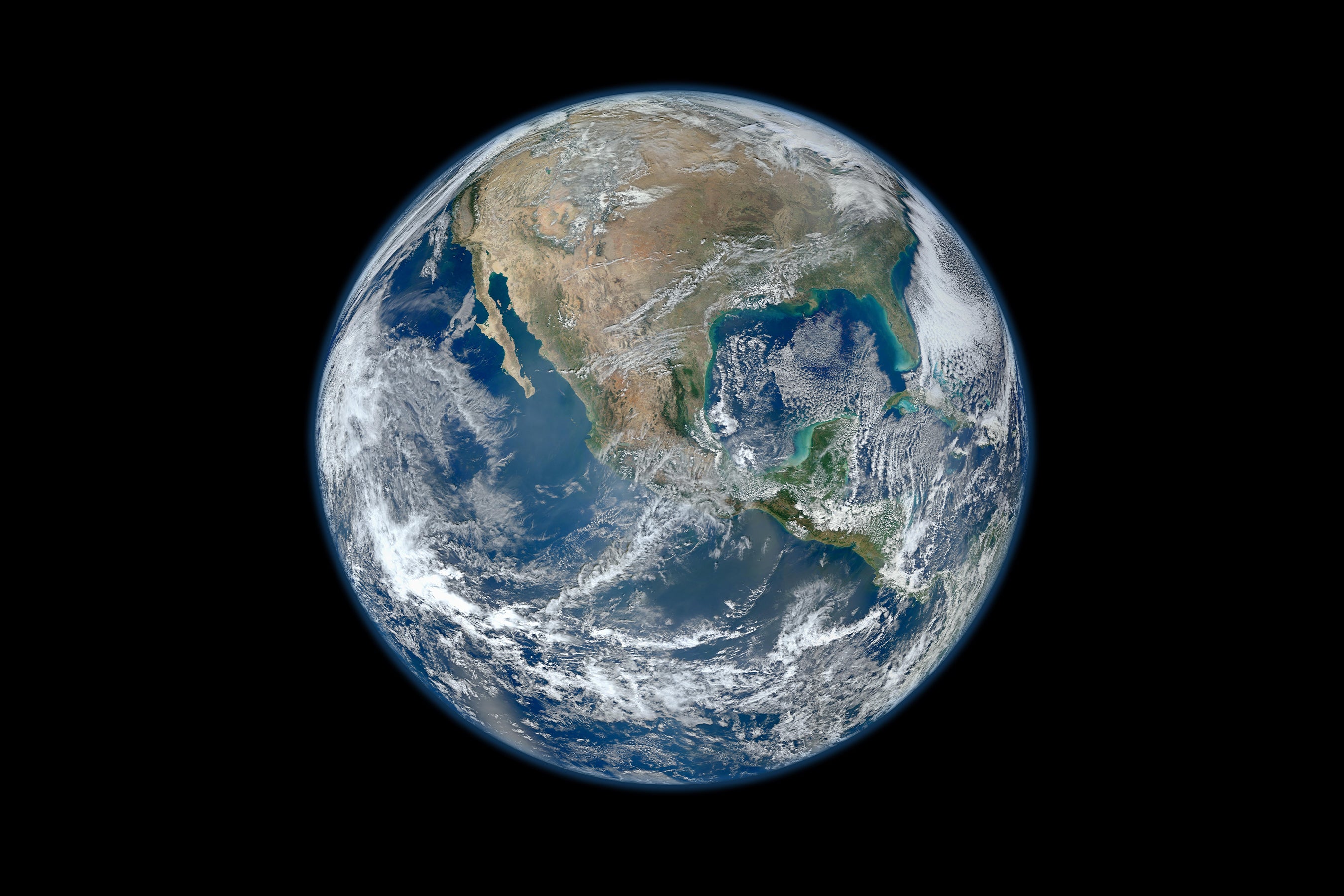
CLIMATEWIRE | Climate scientist James Hansen is frustrated. And he’s worried.
For nearly 40 years, Hansen has been warning the world of the dangers of global warming. His testimony at a groundbreaking 1988 Senate hearing on the greenhouse effect helped inject the coming climate crisis into the public consciousness. And it helped make him one of the most influential climate scientists in the world.
Hansen has spent several decades as director of NASA’s Goddard Institute for Space Studies, and now at 82, he directs Columbia University’s Climate Science, Awareness and Solutions program.
In the years since his seminal testimony, many of Hansen’s basic scientific predictions about the Earth’s climate future have come true. Greenhouse gas emissions have grown, and global temperatures have continued to rise. The world’s glaciers and ice sheets are melting and sea level rise is accelerating.
But Hansen has been disappointed with the scientific community’s response to some of his more recent projections about the future of the warming Earth, which some researchers have characterized as unrealistically dire.
In particular, he was discouraged by the response to a paper he published in 2016, suggesting catastrophic ice melt in Greenland and Antarctica, with widespread global effects, may be possible with relatively modest future warming.
Many researchers said such outcomes were unlikely. But Hansen described the paper as some of his most important work and a warning about the need for more urgent action.
Now he’s bracing himself for a similar reaction to his latest paper, published Thursday morning.
“I expect the response to be characterized by scientific reticence,” he said in an email to E&E News.
The new paper, published in the research journal Oxford Open Climate Change, addresses a central question in modern climate science: How much will the Earth warm in response to future carbon emissions? It’s a metric known as “climate sensitivity,” or how sensitive the planet is to greenhouse gases in the atmosphere.
Hansen’s findings suggest the planet may warm faster than previous estimates have indicated. And while some experts say it’s possible, others suggest that he’s taken the results too far.
In studies, scientists often tackle the climate sensitivity question by investigating how much the Earth would warm if atmospheric carbon dioxide concentrations doubled their preindustrial levels. Prior to the industrial era, global CO2 levels hovered around 280 parts per million, meaning a doubling would land around 560 ppm.
Today’s CO2 levels have already climbed above 400 ppm, giving the question a growing relevance.
Climate sensitivity is a difficult metric to estimate. It hinges on a wide variety of feedback loops in the Earth’s climate system, which can speed up or slow down the planet’s warming.
As the Earth’s reflective glaciers and ice sheets melt, for instance, the planet can absorb more sunlight and warm at a faster rate. Forests and other natural ecosystems may absorb different amounts of carbon as the planet warms. Different types of clouds can both speed up or slow down global warming, and it’s still unclear how they will change as the Earth heats up.
The uncertainties around these factors have made it challenging for scientists to pin down an exact estimate for climate sensitivity. But they’ve chipped away at it in recent years.
For decades, studies generally suggested that the Earth should experience anywhere from 1.5 to 4.5 degrees Celsius of warming with a doubling of CO2. But a 2020 paper narrowed the range to between 2.6 and 3.9 C, using multiple lines of evidence including climate models, the Earth’s response to recent historical emissions and the Earth’s ancient climate history.
The latest assessment report from the U.N.’s Intergovernmental Panel on Climate Change adopted a similar estimate, suggesting a likely range of 2.5 to 4 C with a central estimate around 3 C.
Hansen’s new paper, published with an international group of co-authors, significantly ups the numbers. It suggests a central estimate of around 4.8 C, nearly 2 degrees higher than the IPCC’s figure.
The paper relies largely on evidence from Earth’s ancient climate history. One reason? It’s unclear whether current climate models accurately represent all the relevant feedback effects that may affect climate sensitivity, Hansen and his co-authors argue. The planet’s past provides a clearer view of how the Earth has responded to previous shifts in atmospheric carbon dioxide concentrations.
The paper also suggests that global warming is likely to proceed faster in the near term than previous studies have suggested.
Under the international Paris climate agreement, world leaders are striving to keep global warming well below 2 C and below 1.5 C if at all possible. The new paper warns that warming could exceed 1.5 C by the end of the 2020s and 2 C by 2050.
A gradual global decline in air pollution, driven by tightening environmental regulations, is part of the reasoning. Some types of air pollution are known to have a cooling effect on the climate, which may mask some of the impact of greenhouse gas emissions. As these aerosols decline in the atmosphere, some research suggests, this masking effect may fall away and global temperatures may rise at faster rates.
Hansen and his co-authors argue that better accounting for the declines in global aerosols should accelerate estimates of near-term global warming. Studies suggest that warming between 1970 and 2010 likely proceeded at around 0.18 C per decade. Post-2010, the new paper argues, that figure should rise to 0.27 C.
The findings should motivate greater urgency to not only cut greenhouse gas emissions but to eventually lower global temperatures closer to their preindustrial levels, Hansen suggests. That means using natural resources and technological means to remove carbon dioxide from the atmosphere.
Hansen also suggests that a controversial form of geoengineering, known as solar radiation management, is likely warranted. SRM, in theory, would use reflective aerosols to beam sunlight away from the Earth and lower the planet’s temperatures. The practice has not been tested at any large scale, and scientists have raised a variety of concerns about its ethics and potential unintended side effects.
Yet Hansen believes scientists and activists “should raise concerns about the safety and ethics of NOT doing SRM,” he said by email.
Climate change, caused by human greenhouse gas emissions, is in itself a form of planetary geoengineering, he added.
“My suggestion is to reduce human geoengineering of the planet,” he said.
Yet some scientists say the new paper’s findings — again — are overblown.
The paper “adds very little to the literature,” said Piers Forster, director of the Priestly International Centre for Climate at Leeds University in the U.K. and a lead chapter author of the IPCC’s latest assessment report, in an email to E&E News.
It presents high-end estimates of climate sensitivity based on ancient climate records from the Earth’s past — but those findings aren’t necessarily new, he said. Forster also suggested that some of the methods the new paper used to arrive at those high estimates were “quite subjective and not justified by observations, model studies or literature.”
Forster also took issue with the new paper’s treatment of previous climate sensitivity estimates, including the widely cited 2020 study, which the authors suggested were far too low. The 2020 study presented a careful analysis, using multiple lines of high-quality evidence, Forster said. And yet the authors of the new paper “dismiss it, on spurious grounds.”
Michael Oppenheimer, a climate scientist and director of the Center for Policy Research on Energy and Environment at Princeton University, said the uncertainties around the effects of declining aerosols were important to pay attention to. And he suggested that the new paper’s climate sensitivity estimates were possible.
But added that he regards them as “a worst-worst-case” scenario.
“I think it’s perfectly legitimate to have a worst-worst-case out there,” he added. “They help people think about what the boundaries of the possible are, and they are necessary for risk management against the climate problem.”
But there are still so many uncertainties about the kinds of feedback factors affecting the Earth’s climate sensitivity, he said, that “you can’t really nail it down with the kind of precision that [Hansen’s] provided.”
But Hansen says the new paper’s lines of evidence are based on the most up-to-date research on the Earth’s ancient history.
“[T]here is no basis whatever for the claim that our results are ‘unlikely,’” he said by email. “It is the IPCC sensitivity that is unlikely, less than 1 percent chance of being right, as we show quantitatively in our (peer-reviewed) paper.”
Hansen and ‘scientific reticence’
Hansen has been into the deep end of climate debates for much of his career.
In 1988, at the time of his Senate testimony, scientists were still discussing whether the fingerprint of human-caused global warming could yet be detected above the “noise” of the Earth’s natural climate variations.
“When I first got into this, and when Jim and I were testifying, we were arguing about whether there’s a global signal,” said Oppenheimer, the Princeton scientist, who testified alongside Hansen in 1988. “All the information we had was about global mean temperature, global mean sea level. We couldn’t talk in the language of things that people cared about.”
But even with the limitations of climate science at the time, the scientists warned the world of the dangers to come.
Hansen has co-authored dozens of papers on climate change in the years since, many of which have been highly regarded by the scientific community.
“Over time, he’s got a pretty damn good track record of turning out to be right about things that other people thought differently about,” Oppenheimer said.
Forster, the Leeds University scientist, agreed that “some of Hansen’s papers are brilliant and his work and deeds helped establish this IPCC in the first place.”
But he added that he still thought the new paper misses the mark.
The reception is similar to a major paper Hansen published in 2016, widely known as the “Ice Melt” paper.
The Ice Melt paper, published in the journal Atmospheric Chemistry and Physics, provided a grim, sweeping vision of the Earth’s climate future, focused on the consequences of the melting Greenland and Antarctic ice sheets. Drawing largely on ancient climate data — similar to the new paper — it warned of rapid melting and sea-level rise on the order of several meters within the next century.
It also suggested that the rapid influx of cold, fresh meltwater into the sea could affect ocean circulation patterns and even cause a giant Atlantic current to shut down. That’s a controversial prediction deemed unlikely by the IPCC, one that would have severe impacts on global weather and climate patterns if it actually happened.
The paper received mixed reactions from other climate scientists upon publication. Some praised the paper, while many suggested the findings were unrealistic.
Another 2016 paper, published by a different group of scientists, later found that the likelihood of an Atlantic current shutdown was relatively small and suggested that Hansen’s paper relied on “unrealistic assumptions.”
In his new paper, Hansen referred to that study as an “indictment” of Ice Melt. He also noted that the IPCC’s latest assessment report did not include Ice Melt’s predictions, an omission he likened in the new paper to a form of censorship.
“Science usually acknowledges alternative views and grants ultimate authority to nature,” the new paper states. “In the opinion of our first author (Hansen), IPCC does not want its authority challenged and is comfortable with gradualism. Caution has merits, but the delayed response and amplifying feedbacks of climate make excessive reticence a danger.”
Responding to critiques of his new paper, Hansen again suggested that “scientific reticence” — or a kind of resistance to new findings — is at play. He pointed to a 1961 paper by sociologist Bernard Barber suggesting that scientists themselves can be resistant to scientific discovery.
Claims that his new findings are unrealistic, Hansen said, are “a perfect example of the category of scientific reticence that Barber describes as ‘resistance to discovery.’ It takes a long time for new results to sink into the community.”
Resistance to scientific findings is nothing new to Hansen. His 1988 testimony initially shook the political establishment — yet decades later, global climate action is still proceeding too slowly to meet the Paris climate targets.
When he first testified to Congress in the 1980s, Oppenheimer said, he expected that world governments would have started meaningful emissions reduction programs by the year 2000 or so.
“We didn’t get ahead of the impacts,” he said. “And that’s probably because people weren’t willing to support strong governmental action in most countries … until they were getting clobbered by unusual and highly damaging, and in some cases unprecedented, climate events.”
He regards the current state of global climate action now with a mix of skepticism and optimism.
“We’re in the process of muddling through — we’re in a period where climate change is gonna be painful for a while, it’s gonna hurt a lot of people in a lot of places, but we can get out the other side,” he said. “I think we can get there. But will we?”
Hansen echoed his sentiments in starker terms.
He wrote that he’s been surprised by “the increase of anti-science no-nothing thinking in our politics.”
“That’s why I focus on young people,” he added. “They need to understand the situation and take control.”
Reprinted from E&E News with permission from POLITICO, LLC. Copyright 2022. E&E News provides essential news for energy and environment professionals.

























































